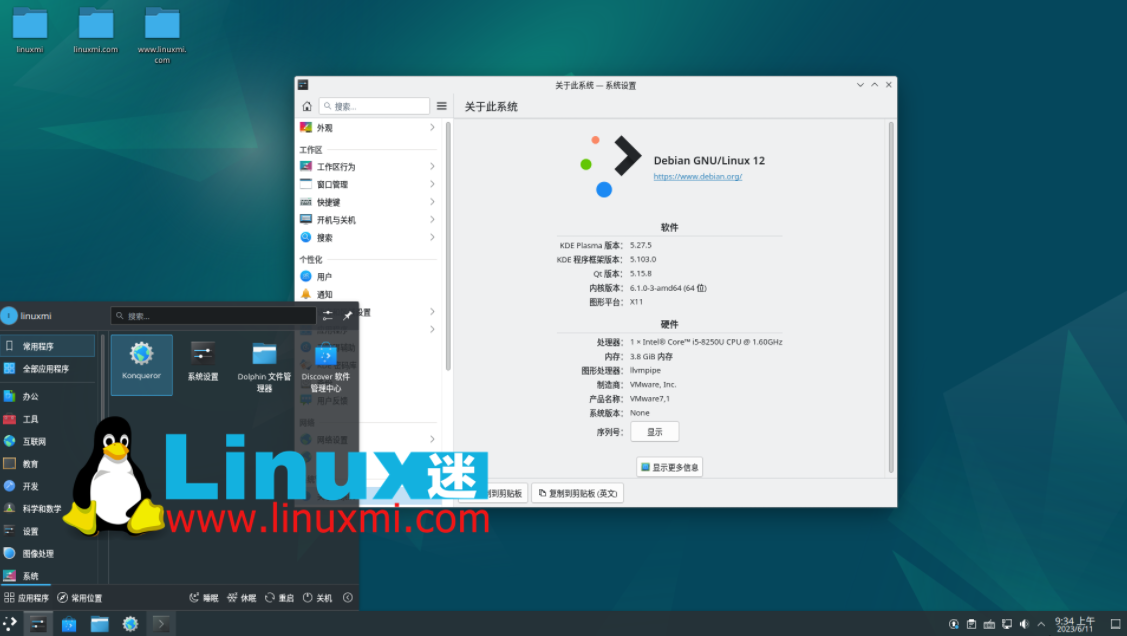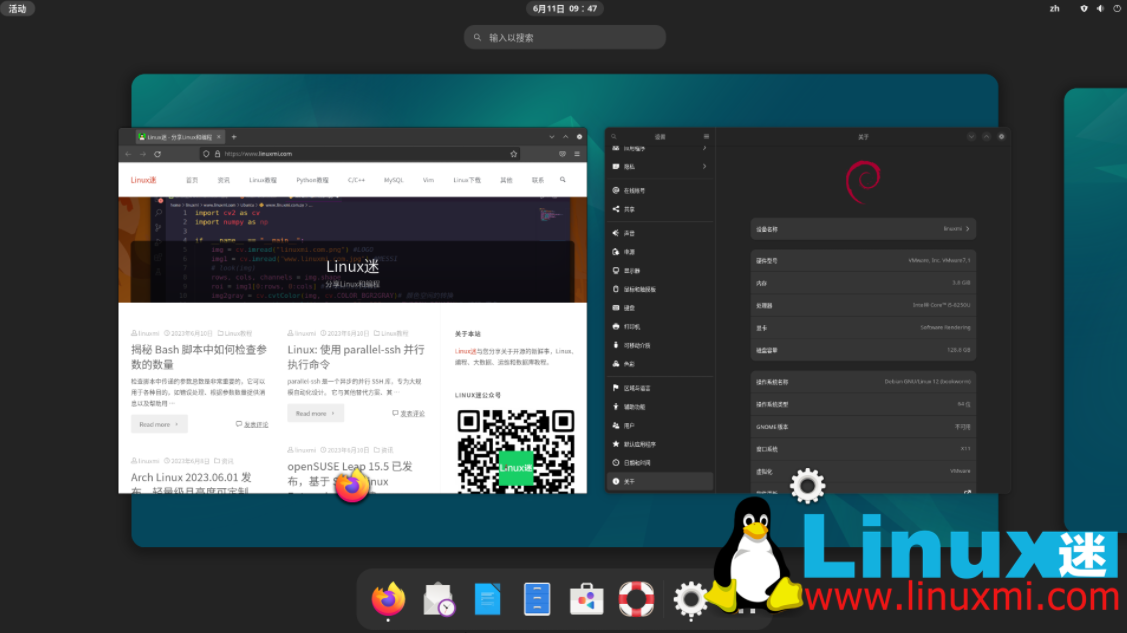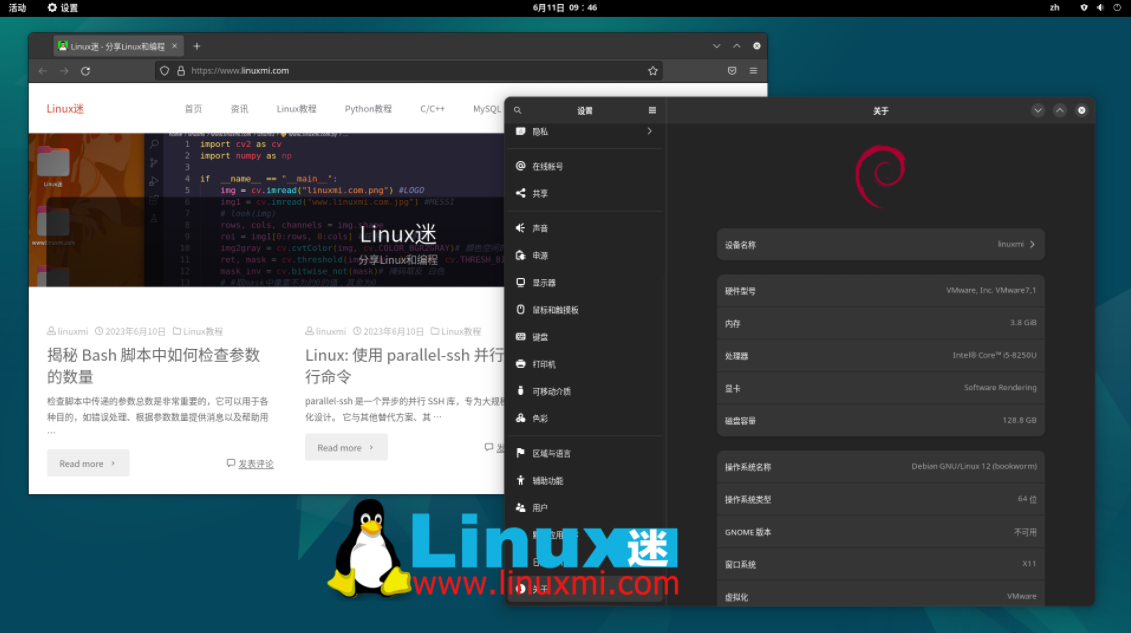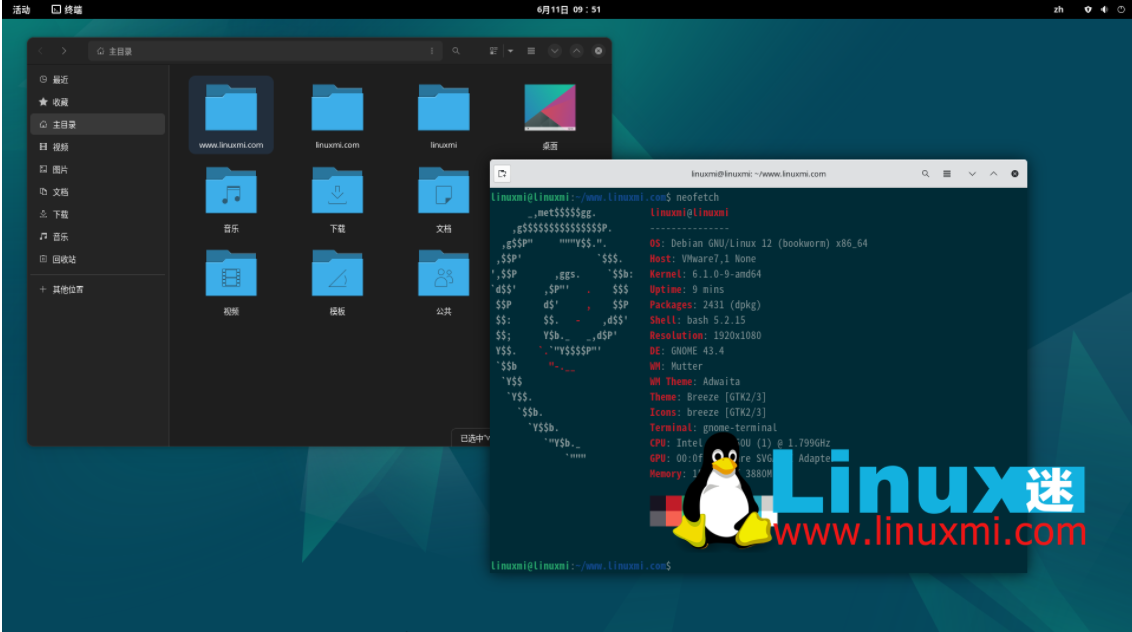Debian 12 'Bookworm” is now released, the best Linux release yet
The Debian Project today released the final version of the Debian 12 “Bookworm” operating system, a major release that brings several new features, updated components, and many improvements.
With its long history of stability and security, Debian 12 is eagerly anticipated by open source enthusiasts around the world. This new version brings many exciting features and improvements, making it the best version yet.
After nearly two years of hard work, Debian 12 “Bookworm” is finally here, powered by the long-term support Linux 6.1 LTS kernel series. This kernel brings new and updated drivers to support modern hardware and will be officially supported until December 2026.

New features in Debian 12 “Bookworm” include a new non-free firmware repository containing non-free firmware packages forked from Debian’s non-free repositories. Users upgrading from Debian 11 to Debian 12 will need to add the new non-free firmware repository to their sources.list file.
Debian 12 also brings read and write support for APFS (Apple File System) using the apfsprogs and apfs-dkms tools, a new tool called ntfs2btrfs that allows you to convert NTFS drives to Btrfs, and also There is a new malloc implementation called mimalloc, a new kernel SMB server called ksmbd-tools, and support for the merged usr root filesystem layout.

Other new features include secure boot support on UEFI-enabled AArch64 (ARM64) systems, a new shiny-server package for Debian Med Blend, simplified scientific web applications using the R language, and GNU Compiler Collection (GCC) 12.2 as the default system compiler.

This release also includes brand new Emerald artwork, designed (again) by Juliette Taka. This important Debian version also introduces new fonts and provides a command-line tool called fnt for accessing 1,500 fonts that comply with the DFSG (Debian Free Software Guidelines).
"This release adds 11,089 new packages for a total of 64,419 packages, while removing 6,296 obsolete packages. This release updates 43,254 packages. The disk usage of the entire Debian Bookworm is 365,016,420 kB (365 GB), consisting of 1,341,564,204 lines of code," the release announcement states.
Other notable changes include deprecating os-prober in the GRUB boot loader by default to check for existing operating system installations. This mainly affects dual-boot users, who now need to rely on dpkg-reconfigure.
Debian Bookworm also deprecated the use of bash as /bin/sh, removed the libpam-ldap and libnss-ldap packages that are no longer maintained upstream and replaced them with libpam-ldapd and libnss-ldapd, removed tempfile and The rename.ul program (mktemp and file-rename can be used as alternatives), and the systemd journalctl utility instead of rsyslog for viewing logs.

Another deprecated tool is which. The Debian project recommends using command -v when writing shell scripts, and for interactive Bash shell users can use type or type -a. This change will not affect ZSH, CSH and TCSH users.
As with previous versions, Debian 12 supports 32-bit (i386), 64-bit (x86_64), AArch64 (arm64), Armel, ARMhf, MIPS 64-bit little endian (mips64el), MIPS (mipsel), PowerPC 64-bit Little endian (ppc64el), RISC-V (riscv64) and IBM System z (s390x).
Debian 12 "Bookworm" will soon be available as a Live image for download here, with KDE Plasma 5.27 LTS, GNOME 43, Xfce 4.18, Cinnamon 5.6, MATE 1.26, LXDE 11 and LXQt 1.2.0 desktop environments pre-installed. However, these Live images only support 64-bit and 32-bit systems.
Installation images for all supported architectures mentioned above will also be available for download here. Upgrading from Debian 11 "Bullseye" to Debian 12 "Bookworm" is also possible and fairly simple, just follow the official upgrade instructions (don't forget to add the new non-free firmware repository).
Debian 12 "Bookworm" will be supported for five years, until June 2028.
I hope everyone likes this powerful and stable Linux distribution.
The above is the detailed content of Debian 12 'Bookworm” is now released, the best Linux release yet. For more information, please follow other related articles on the PHP Chinese website!

Hot AI Tools

Undresser.AI Undress
AI-powered app for creating realistic nude photos

AI Clothes Remover
Online AI tool for removing clothes from photos.

Undress AI Tool
Undress images for free

Clothoff.io
AI clothes remover

AI Hentai Generator
Generate AI Hentai for free.

Hot Article

Hot Tools

Notepad++7.3.1
Easy-to-use and free code editor

SublimeText3 Chinese version
Chinese version, very easy to use

Zend Studio 13.0.1
Powerful PHP integrated development environment

Dreamweaver CS6
Visual web development tools

SublimeText3 Mac version
God-level code editing software (SublimeText3)

Hot Topics
 1378
1378
 52
52
 Difference between centos and ubuntu
Apr 14, 2025 pm 09:09 PM
Difference between centos and ubuntu
Apr 14, 2025 pm 09:09 PM
The key differences between CentOS and Ubuntu are: origin (CentOS originates from Red Hat, for enterprises; Ubuntu originates from Debian, for individuals), package management (CentOS uses yum, focusing on stability; Ubuntu uses apt, for high update frequency), support cycle (CentOS provides 10 years of support, Ubuntu provides 5 years of LTS support), community support (CentOS focuses on stability, Ubuntu provides a wide range of tutorials and documents), uses (CentOS is biased towards servers, Ubuntu is suitable for servers and desktops), other differences include installation simplicity (CentOS is thin)
 Centos stops maintenance 2024
Apr 14, 2025 pm 08:39 PM
Centos stops maintenance 2024
Apr 14, 2025 pm 08:39 PM
CentOS will be shut down in 2024 because its upstream distribution, RHEL 8, has been shut down. This shutdown will affect the CentOS 8 system, preventing it from continuing to receive updates. Users should plan for migration, and recommended options include CentOS Stream, AlmaLinux, and Rocky Linux to keep the system safe and stable.
 How to install centos
Apr 14, 2025 pm 09:03 PM
How to install centos
Apr 14, 2025 pm 09:03 PM
CentOS installation steps: Download the ISO image and burn bootable media; boot and select the installation source; select the language and keyboard layout; configure the network; partition the hard disk; set the system clock; create the root user; select the software package; start the installation; restart and boot from the hard disk after the installation is completed.
 What are the backup methods for GitLab on CentOS
Apr 14, 2025 pm 05:33 PM
What are the backup methods for GitLab on CentOS
Apr 14, 2025 pm 05:33 PM
Backup and Recovery Policy of GitLab under CentOS System In order to ensure data security and recoverability, GitLab on CentOS provides a variety of backup methods. This article will introduce several common backup methods, configuration parameters and recovery processes in detail to help you establish a complete GitLab backup and recovery strategy. 1. Manual backup Use the gitlab-rakegitlab:backup:create command to execute manual backup. This command backs up key information such as GitLab repository, database, users, user groups, keys, and permissions. The default backup file is stored in the /var/opt/gitlab/backups directory. You can modify /etc/gitlab
 Detailed explanation of docker principle
Apr 14, 2025 pm 11:57 PM
Detailed explanation of docker principle
Apr 14, 2025 pm 11:57 PM
Docker uses Linux kernel features to provide an efficient and isolated application running environment. Its working principle is as follows: 1. The mirror is used as a read-only template, which contains everything you need to run the application; 2. The Union File System (UnionFS) stacks multiple file systems, only storing the differences, saving space and speeding up; 3. The daemon manages the mirrors and containers, and the client uses them for interaction; 4. Namespaces and cgroups implement container isolation and resource limitations; 5. Multiple network modes support container interconnection. Only by understanding these core concepts can you better utilize Docker.
 How to use docker desktop
Apr 15, 2025 am 11:45 AM
How to use docker desktop
Apr 15, 2025 am 11:45 AM
How to use Docker Desktop? Docker Desktop is a tool for running Docker containers on local machines. The steps to use include: 1. Install Docker Desktop; 2. Start Docker Desktop; 3. Create Docker image (using Dockerfile); 4. Build Docker image (using docker build); 5. Run Docker container (using docker run).
 How to mount hard disk in centos
Apr 14, 2025 pm 08:15 PM
How to mount hard disk in centos
Apr 14, 2025 pm 08:15 PM
CentOS hard disk mount is divided into the following steps: determine the hard disk device name (/dev/sdX); create a mount point (it is recommended to use /mnt/newdisk); execute the mount command (mount /dev/sdX1 /mnt/newdisk); edit the /etc/fstab file to add a permanent mount configuration; use the umount command to uninstall the device to ensure that no process uses the device.
 What to do after centos stops maintenance
Apr 14, 2025 pm 08:48 PM
What to do after centos stops maintenance
Apr 14, 2025 pm 08:48 PM
After CentOS is stopped, users can take the following measures to deal with it: Select a compatible distribution: such as AlmaLinux, Rocky Linux, and CentOS Stream. Migrate to commercial distributions: such as Red Hat Enterprise Linux, Oracle Linux. Upgrade to CentOS 9 Stream: Rolling distribution, providing the latest technology. Select other Linux distributions: such as Ubuntu, Debian. Evaluate other options such as containers, virtual machines, or cloud platforms.




